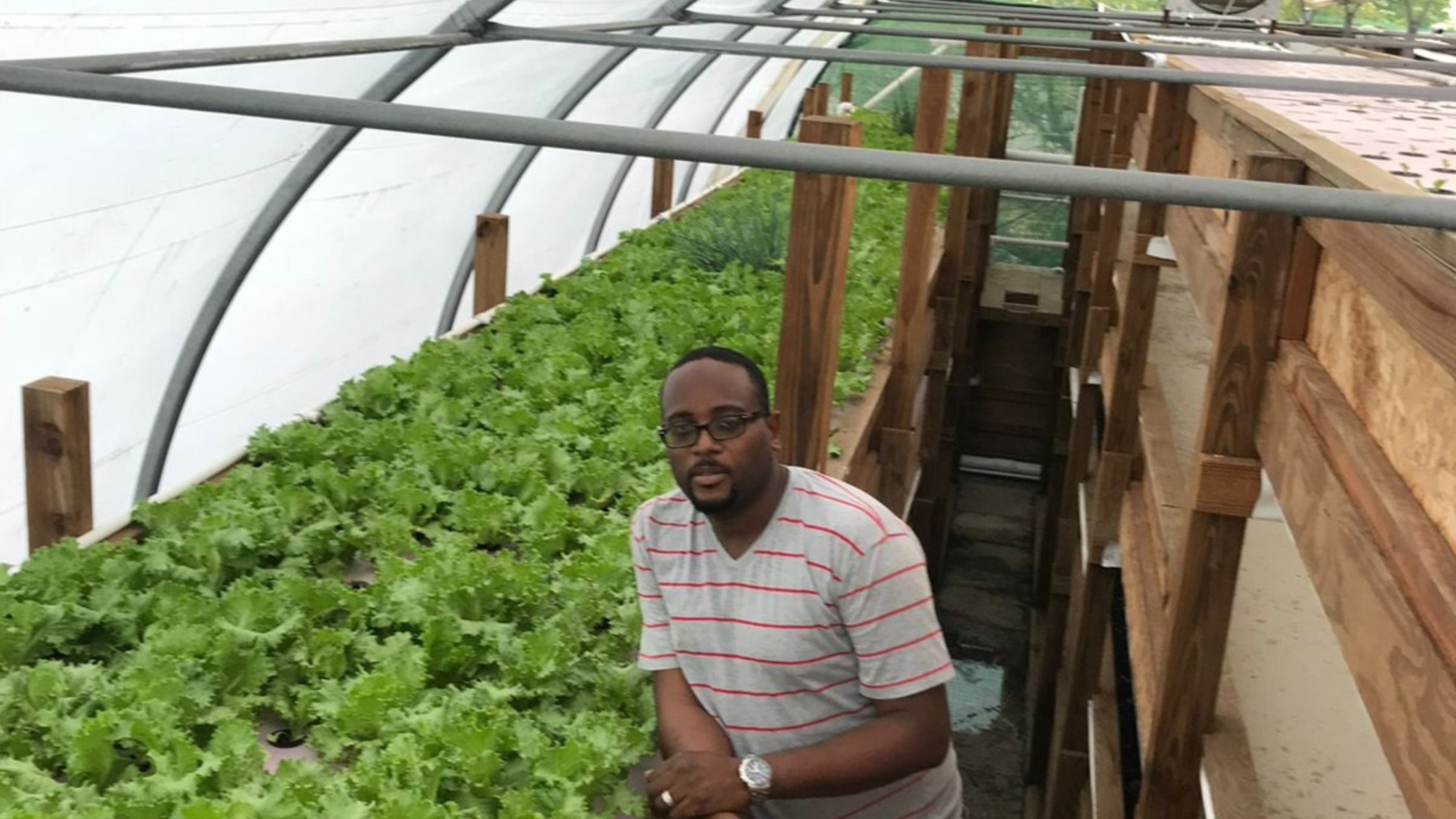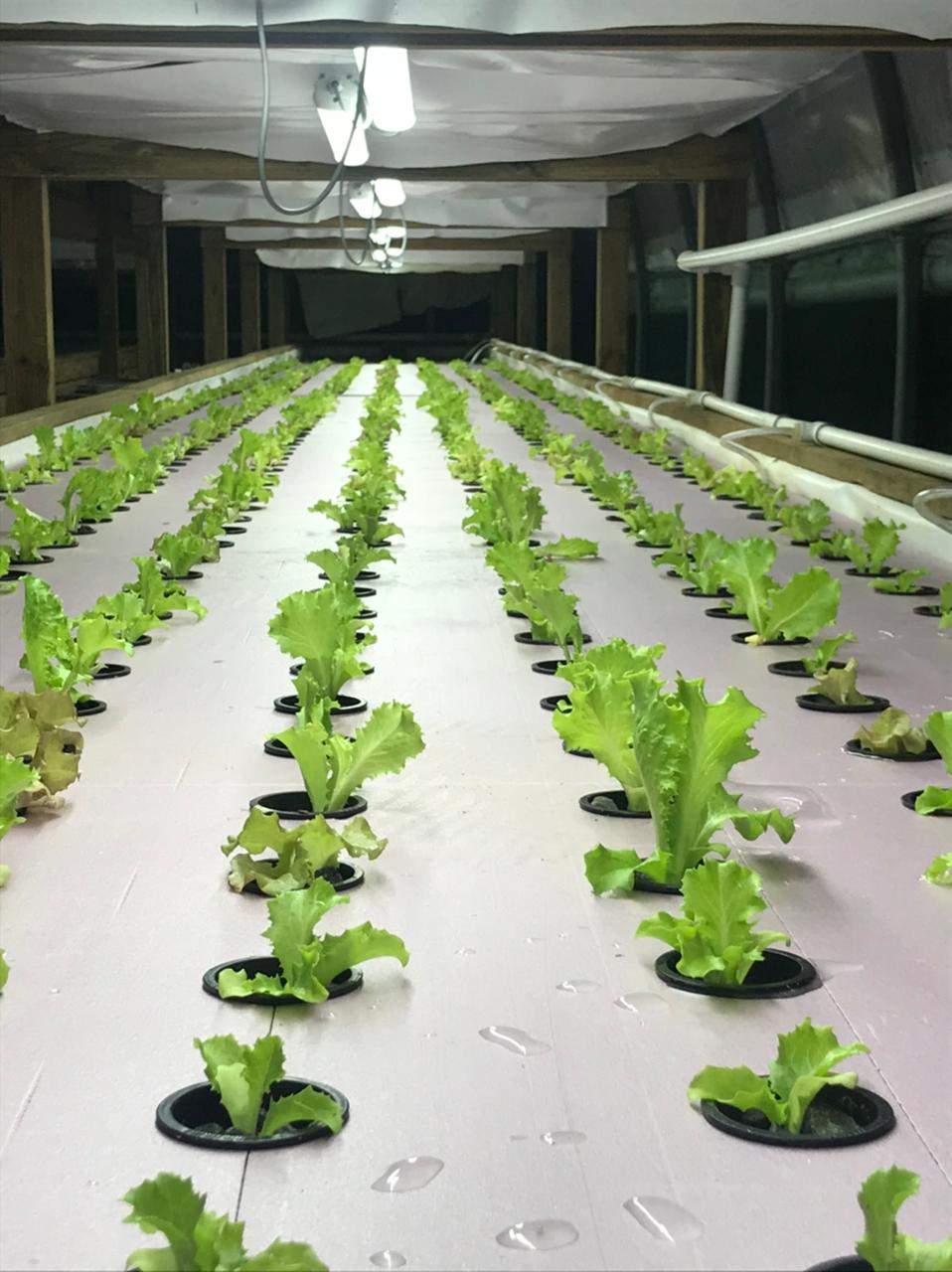
08 Dec Farming Smart in St. Lucia: Green Haven Fresh Farm
Born into a family of farmers, fishers and tradesmen in Bois D’Inde Choiseul, St. Lucia Jameson Alphonse pursued accounting as a career. But when deciding to grow and diversify his income, farming was the first place that he turned. He did this with a vision to do it smarter; considering how to yield more with less inputs and under increasingly unpredictable climate change conditions.
In 2010 he started Green Haven Fresh Farm with two 200 square foot greenhouses producing tomatoes all year. By 2016 after a customer asked him to supply lettuce, he had built a vertical bed aquaponics system.
Today, the farm’s largest customer is KFC St. Lucia and it supplies the Massy Supermarket chain, hotels and the vendor’s market. Jameson estimates that his product touches at least 75 percent of St. Lucian households and plays a role in the reduction of the national food import bill.
An 80,000-gallon underground rainwater harvesting system provides irrigation for the greenhouse, aquaponics and open till farm areas of Green Haven. As a member of the St. Lucia Agricultural Forum for Youth (SLAFY), Jameson has gotten technical assistance from the Inter-American Institute for Cooperation on Agriculture (IICA). He’s also received funding from Global Environment Fund (GEF) to install solar panels that have helped to reduce his electricity bill by 40 per cent.
For Jameson, “The concept of the farm is to be self-sustainable and nothing goes to waste”.

Why aquaponics?
In Bois D’Inde during the dry season Jameson explains that potable water is only available for a few hours a day, two or three days of the week. Considering this challenge, he wanted to find the most efficient way to grow lettuce consistently.
He admits to doing copious research before learning about hydroponics and aquaponics. The closed system used in aquaponics was appealing. Water serving both as the fish habitat and the ‘soil’ for the plants is recirculated. The fish waste provides nutrients for the plants and the plant roots filter the water making it clean and oxygenated for the fish.
This process took the uncertainty of water supply out of the equation and also meant no soil or fertilizer would be needed; all in keeping with the idea of a self-sustainable farm.
The opportunity for Smart Agriculture
Jameson credits the internet, specifically YouTube, and his own determination to find more efficient methods of farming, for getting started with aquaponics. He lamented that this kind of information wasn’t readily available locally.
In fact, Jameson believes that smart agriculture, employing not just techniques like aquaponics but technology overall is the biggest opportunity for the farmers in the Caribbean. He indicates that it is becoming increasingly difficult to grow food year-round given climate change, logistical problems of getting inputs and the continued use of farming techniques that deplete the soil of nutrients, lessening yields over time.
In smart agriculture and smart farming, sensors are used to monitor the conditions of soil, plants, terrain, weather and more, equipping farmers with information to make the best decisions to improve productivity and profitability. Enabling farmers with smart agriculture expertise, technology and infrastructure would mitigate the problems they face, he reiterates, improving their livelihoods and contributing to food security in the region.
Farming smart for livelihoods and food security
The World Food Summit 1996 outlined that, “Food security exists when all people, at all times, have physical and economic access to sufficient, safe and nutritious food that meets their dietary needs and food preferences for an active and healthy life.” [FAO.org]
But according a news release sharing findings of a recent survey conducted by the Caribbean Community (CARICOM) and the United Nations World Food Programme in the English-speaking Caribbean, “While severe food insecurity in the region remained largely unchanged, when compared to February 2022, there has been a significant increase in households that have fallen into moderate levels of food insecurity. Overall, the number of food insecure people has increased by 1.3 million over the past six months.”
Joseph Cox, Assistant Secretary-General, Economic Integration, Innovation and Development, CARICOM Secretariat was quoted as saying that regional leaders are working to “identify solutions for increasing food production and reducing import dependency within the region in order to reduce the cost of food.”
Heads of State and Government attending the ninth summit of the Americas in June this year committed to “promote the development of sustainable agriculture practices that maintain productivity and food security and avoid negative impacts on local communities, rural producers and consumers…” as part of a broader commitment to limiting greenhouse gas emissions from agriculture.
Engaging farmers like Jameson Alphonse and understanding their needs is crucial to these efforts. As Jameson aptly points out,
“We need to crop farms smarter, use the available technology so that we can better control the environment and control production from all facets. Without those controls what is left is luck and chance…When there is too much rain we cannot produce; when there is too much sun we cannot produce; we can only produce when the environment is perfect but the international world has mastered those [challenges]… it is just a matter of how we adopt it in the Caribbean so that our farmers can ensure the efficiency of their farm[s] and the consistency of production year-round.”

